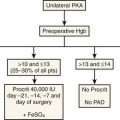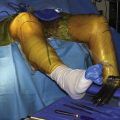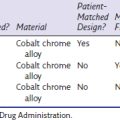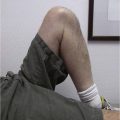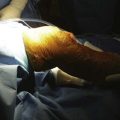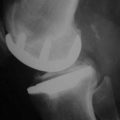CHAPTER 5 Incidence of Partial Knee Arthroplasty
A Growing Phenomenon?
 Between 1998 and 2005, the incidence of partial knee replacement in the United States grew by over three times.
Between 1998 and 2005, the incidence of partial knee replacement in the United States grew by over three times. As of 2005, partial knee replacement comprised approximately 9% of all knee arthroplasties in the United States.
As of 2005, partial knee replacement comprised approximately 9% of all knee arthroplasties in the United States.Introduction
While the number of patients with symptomatic osteoarthritis has continued to grow significantly, it appears that the percentage of patients in which the osteoarthritis is confined to predominantly one compartment (and thus amenable to partial knee replacement) has remained relatively constant, and has been estimated at 30%. This chapter reports the incidence of partial knee arthroplasty (PKA) in all countries that have an existing registry. For the United States, which does not have a registry, we have estimated the incidence of unicondylar arthroplasty by indirect methods, using implant sales data from the major manufacturers.1 We have estimated market share by utilizing commercial databases that track market share.2
Incidence of PKA in Scandinavia
The Swedish Knee Arthroplasty Register has made annual reports for the period 1998–2005.3 Between 2002 and 2005, UKAs represented between 9.4% and 11.7% of all arthroplasties. In 1998, 4400 TKRs were performed and approximately 1000 UKAs, and in 2006 the number of TKRs had grown to 9700, and the number of UKAs in relative terms declined to 900. During this period the register published several reports of a relatively high failure rate, and this may have affected the growth of UKA, because a different experience existed in Finland and Norway, and a higher rate of growth was seen. The Norwegian registry reported in their 2008 report that the number of UKAs increased from 87 in 1998 to 455 in 2005, an increase of 400%.4 During the same period the number of total knees implanted in Norway increased from 1320 in 1998, to 2800 in 2005. The Finnish joint registry does not report their finding on the Internet, but has some data in published papers. Between 1988 and 1995, 540 UKAs were performed as compared to 12,480 TKRs, and between 1996 and 2003 the number of UKAs increased to 1251 as compared to 34,132 TKRs.
Incidence of Partial Knee Replacement in Other Countries
The Australian Joint Registry reported that the annual use of unicondylar knee replacement increased four times from 6700 unis implanted in 2000 to 28,822 unis in 2008.5 During this same time period, the number of TKRs increased fivefold from 36,442 to 197,301. The percentage of unis relative to all knee arthroplasties went from 19% to 16% during the same period.
The New Zealand Arthroplasty Registry reported that unicondylar arthroplasty utilization doubled from 2000 to 2003, with a moderate decrease from 2004 to 2008.6 Nonetheless, in 2000, of the 3015 knee arthroplasty procedures, unicondylar arthroplasty represented 11% of all knee arthroplasty procedures, and in 2008 unicondylar procedures represented 10% of all knee arthroplasty procedures. The British arthroplasty register in 2009 reported that unicondylar arthroplasty represented 8% of all knee replacements done between 2000 and 2009.7 In 2008, there were 71,527 primary knee arthroplasties reported to the U.K. registry. Of these, 5573 were unicondylar arthroplasties (8% of the total amount of procedures), and 1030 were patellofemoral arthroplasties (1% of the total). Consequently, 9% of knee arthroplasties were partial knee replacements, and this percentage has remained stable since 2000.
The Canadian Arthroplasty Register reported that the total number of knee arthroplasty procedures per year increased from 16,709 in 1998 to 38,922 in 2008, a change of 125%.8 Of this figure, partial knee replacement represented about 8% of the TKR procedures in 2004, 9% in 2005, and 8% in 2007.
1 Riddle DL, Jiranek WA, McGlynn FJ. Yearly incidence of unicompartmental knee replacement in the United States. J Arthroplasty. 2008;23:408-412.
2 DataMonitor. Hip and knee replacement market: overview of the US and European markets—growth in a mature market, 2006.
3 The Swedish Knee Arthroplasty Register. Annual report. http://www.knee.nko.se/english/online/thePages/contact.php, 2006.
4 The Norwegian Arthroplasty Register. Annual report. http://nrlweb.ihelse.net/eng/, 2008.
5 Hip and Knee Arthroplasty National Joint Replacement Registry. Annual report. www.aoa.org.au/, 2008. or www.dmac.adelaide.edu.au/aoanjrr/
6 New Zealand National Joint Register. http://www.cdhb.govt.nz/njr/
7 National Joint Registry. http://www.njrcentre.org.uk/njrcentre/default.aspx



